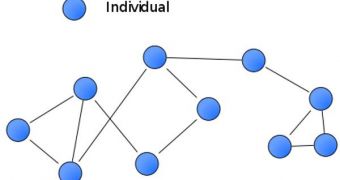Over recent decades, the complexity of simulations conducted using the world's supercomputers has increased significantly, and it is now possible to mimic the path of an atom or the behavior of a fly, or run simulations involving numerous factors at the same time. Taking his inspiration from the way meteorologists use their data to predict how a tropical storm will act, and where it will hit the coastline, expert Alessandro Vespignani from the Indiana University believes that we will soon be able to create simulations that will one day predict with unprecedented foresight, specificity and scale such human actions as increased Internet users, economic crises, pandemic spread patterns, and so on.
This type of achievement could become possible thanks to new advancements in data-gathering techniques, as well as the new informatics tools that allow researchers to gather simulation results within a sustainable amount of time. This, in turn, is made possible through the use of enormous amounts of computational power, made possible by new generations of processors. The reason why Vespignani believes the new class of simulations will become possible is the fact that these new scientific possibilities will soon be able to quantize one of the more elusive aspects of the world – the behavior of large groups of people.
“It is analogous to what happened in physics when we saw the shift from the study of atomic and molecular physics to the study of the physics of matter. Here we see a movement from the study of a small number of elements, or small social groups, to the study of the behavior of large-scale social systems consisting of millions of people that can be characterized in space, both social and geographic, and in time,” the expert explains.
Alessandro Vespignani is the IU James H. Rudy professor of informatics and also an adjunct professor of physics and statistics. He directs the University's Pervasive Technology Institute Center for Complex Networks and Systems Research (CnetS), and holds an appointment in the IU Bloomington School of Informatics and Computing. His study, entitled “Predicting the Behavior of Techno-Social Systems,” will appear in the “Perspectives” section of the July 24th issue of the respected journal Science.
“While the needed integrated approach is still in its infancy, using network theory, mathematical biology, statistics, computer science and nonequilibrium statistical physics will play a key role in the creation of computational forecasting infrastructures. And that should help us design better energy distribution systems, plan for traffic-free cities and manage the deployment of the world's resources,” he concludes.

 14 DAY TRIAL //
14 DAY TRIAL //